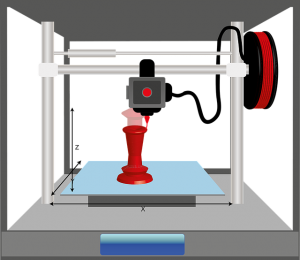
More and more manufacturing companies are embracing the trend of 3D printing. According to research by Statista, there are over 23,000 commercial-grade 3D printers in use. While manufacturing companies often use other tools and machines to convert raw materials into finished products, 3D printers offer several unique benefits. Below are five big benefits of 3D printing in manufacturing.
#1) Design Customization
By using a 3D printer, manufacturing companies can customize nearly every aspect of their product. Product designs, of course, are created in computer-aided design (CAD) software. Manufacturing companies can design their products using CAD software, after which they can upload or transfer the CAD file to a 3D printer. It’s a simple process that allows for an exceptional level of customization over the product’s design.
#2) Faster Prototyping
3D printers allow manufacturing companies to both design and build prototypes of products more quickly. Before a manufacturing company can mass-produce a product, it must build a prototype. Thankfully, 3D printing supports rapid prototyping. Manufacturing companies can quickly design and build prototypes, allowing them to get the ball rolling on their new products.
#3) Less Waste
3D printers also produce less waste than other tools and machines used in the manufacturing industry. While there are several types, most 3D printers work by following the commands included in a CAD file. Therefore, they only release material in areas where it’s needed. With a 3D printer, manufacturing companies can achieve a more efficient production process that minimizes waste.
#4) Ease of Replication
Another reason why 3D printing has become so popular in the manufacturing industry is that it allowing manufacturing companies to easily replicate products. Product designs are stored in a CAD file. Once a CAD file has been created, it can be used to create many units of the same product, all of which retain the same size and dimensions.
#5) Strong and Durable Products
Finally, 3D printing supports the creation of strong and durable products. The strength and durability of a 3D-printed product, of course, is highly dependent upon the material from it’s constructed. With that said, 3D printers can build products using a range of different materials, many of which are strong and durable. Polymer, for instance, is frequently used in 3D printers. It’s typically heated in the 3D printer, after which the polymer is released through the nozzle head. Once dry, the material hardens to create a strong and durable product.
